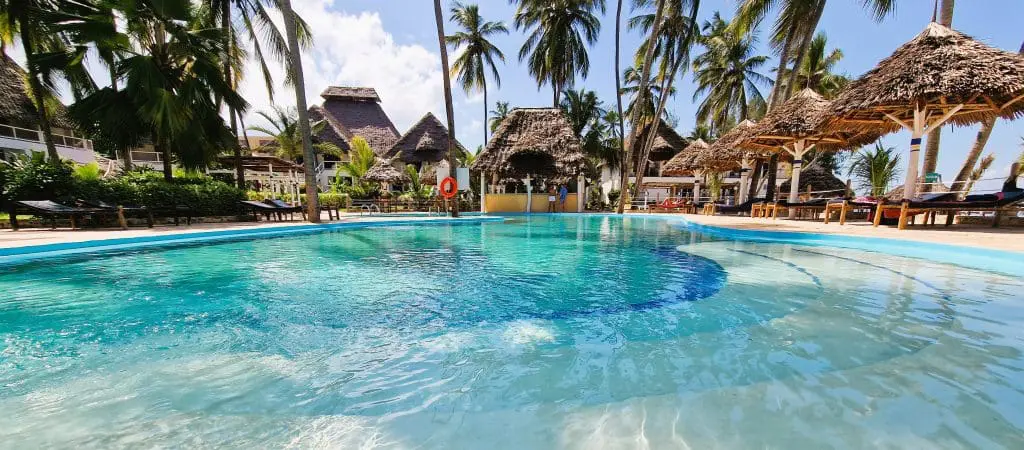
Welcome to
Lake Manyara National Park
Lake Manyara National Park is an underrated gem among safari parks. This lake stands out for its natural wealth in a compact space, offering an extraordinary ecological variety concentrated in a small area. This benefits visitors by providing a complete and diverse experience without the need to cover long distances, while also benefiting ecosystems by maintaining their balance in a protected and accessible environment.
Home to over 400 species of birds and a notable number of predators, the park is a paradise for nature and photography enthusiasts. One of its main attractions is the enormous flocks of flamingos that turn the lake’s waters pink. These scenes, with thousands of flamingos feeding and flying in unison, create a visual spectacle and offer exceptional photographic opportunities, worthy of any professional or personal collection.
Lake Manyara combines its impressive biodiversity with captivating landscapes, making it an unforgettable destination for any explorer.
Overview
Lake Manyara National Park, a protected area in the Arusha region, covers an area of 330 km², of which 200 km² are occupied by the lake. It was declared a game reserve in 1957 and registered as a National Park three years later. The park is located between the 600-meter-high escarpment of the Great Rift Valley and Lake Manyara, 130 km from Arusha.
Lake Manyara National Park is a destination that can be enjoyed on a one-day excursion. At the southern end of the park, you’ll find the famous sulfur hot springs known as Majimoto. As you progress, the forest gives way to areas of scrubland, grasslands, swamps, and beyond, the fascinating alkaline lake, offering visitors a diverse and memorable experience.
Wildlife
Located at the base of the imposing escarpment of the Great Rift Valley, the park is known for its stunning natural beauty. The wildlife of Lake Manyara goes beyond birds; the park is also home to a wide variety of animals, such as buffalo, elephants, giraffes, impalas, hippos, and many smaller species. It is also famous for its tree-climbing lions, which spend most of the day resting in the branches of acacia trees, six or seven meters above the ground. Additionally, it has the highest concentration of pachyderms per square kilometer in Tanzania.
As visitors venture in, they are immersed in a lush forest, home to groups of baboons and blue monkeys. Buffalo and hippos can be seen heading toward the nearby Hippo Pool, while the vegetation gradually transforms into flat-topped acacia woodlands. During the hottest hours of the day, it is common to see entire prides of lions resting in the branches of these trees, a characteristic trait of the Lake Manyara lions.
Along with these amazing tree-climbing lions, there are also common grazers and browsers, as well as the curious striped mongoose. Two-thirds of the park is dominated by the slightly alkaline lake, which is home to a vast variety of waterfowl.
Birdlife
More than 400 bird species, including flamingos, pelicans, red-billed queleas, storks, sacred ibises, cormorants, and Egyptian geese, can be observed in this area. Other notable species include the African spoonbill, lesser flamingo, white pelican, and white-faced duck.
Access
Mto wa Mbu (which means “Mosquito Creek”) is a small, lively market town known for selling fresh fruits and vegetables grown on the fertile nearby farms. From this charming settlement, visitors have easy access to Lake Manyara National Park, which is just a few kilometers away, making it an ideal starting point for those looking to explore the area. Additionally, Mto wa Mbu has become a popular stopover for tourists and campers visiting the region.
When to visit
The dry season, from July to October, is the best time to spot large mammals, while the wet season, from November to June, is ideal for birdwatching.
Highlights and FAQ

Lake Manyara -> Arusha city: ~2h drive
Lake Manyara -> Tarangire: ~1h drive
Lake Manyara -> Ngorongoro ~1h drive
Lake Manyara -> Serengeti: ~4h drive
Area: 325 km²
Travel: 130 km from Arusha
Established: 1960
Visitors: 178.500 / year
Official Homepage
- The famous tree climbing Lions
- Lots of monkeys (especially baboons)
- Flamingo and hundreds of other bird species
- Zebra
- Buffalo
- Hippo
- Giraffe
- Elephant
- Antelope
- Wildebeest
- Snakes
- Famous Treetops / Canopy Walk in the rain forest
- Game drive / Safari during the night
- Visit the sprawling nearby village Mto wa Mbu and taste some red bananas
- Go an mountain bike tour around the Lake area
- Visit a Maasai Boma











